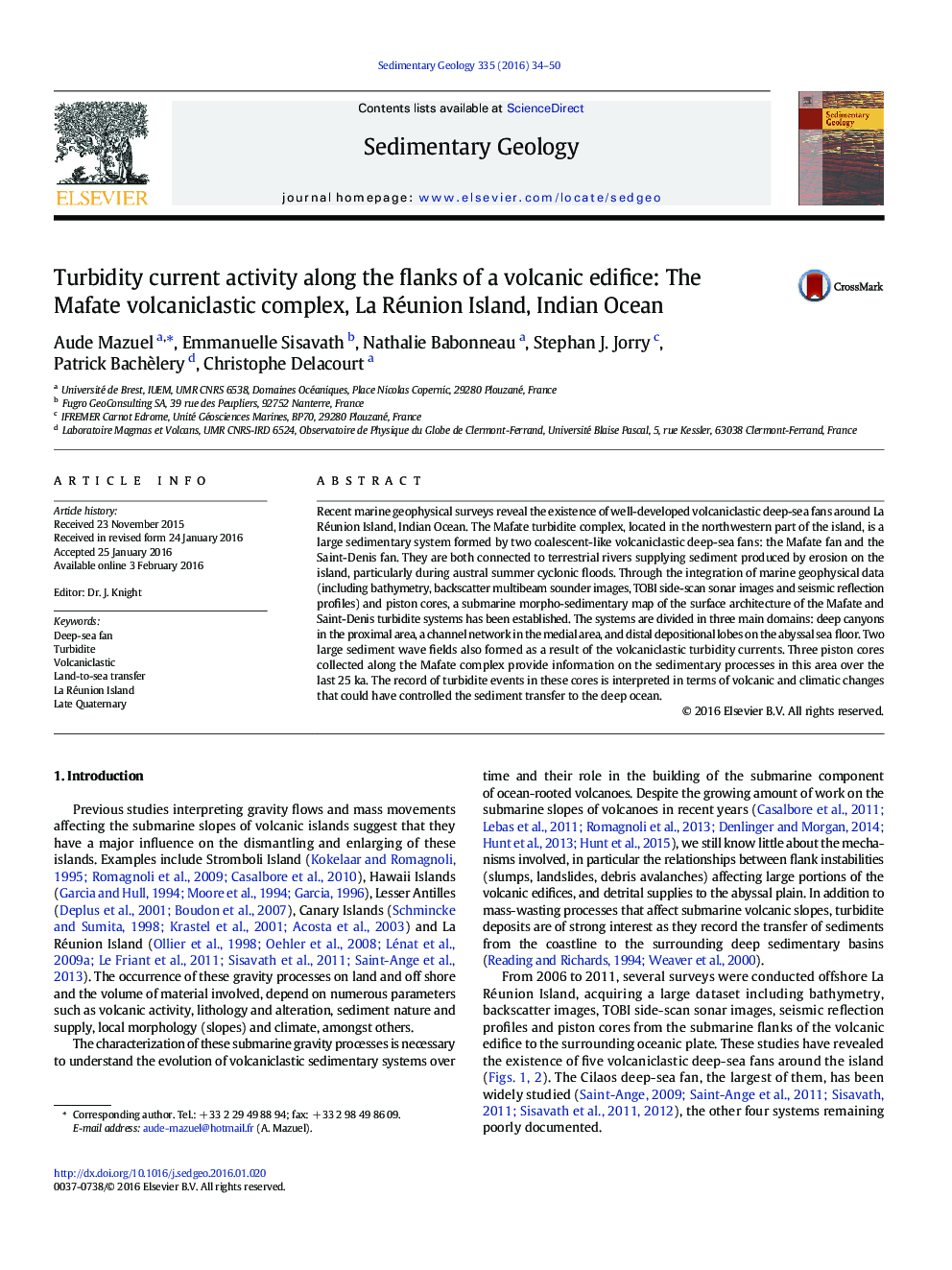| کد مقاله | کد نشریه | سال انتشار | مقاله انگلیسی | نسخه تمام متن |
|---|---|---|---|---|
| 4689088 | 1636028 | 2016 | 17 صفحه PDF | دانلود رایگان |

• We present the first description of the Mafate–Saint-Denis turbidite complex.
• Cores offer a record of the Mafate turbidite system activity over the last 25 ka.
• Turbidite activity occurs during a period dominated by erosional processes on land.
• Two sediment wave fields develop thanks to sandy supplies from turbidity currents.
Recent marine geophysical surveys reveal the existence of well-developed volcaniclastic deep-sea fans around La Réunion Island, Indian Ocean. The Mafate turbidite complex, located in the northwestern part of the island, is a large sedimentary system formed by two coalescent-like volcaniclastic deep-sea fans: the Mafate fan and the Saint-Denis fan. They are both connected to terrestrial rivers supplying sediment produced by erosion on the island, particularly during austral summer cyclonic floods. Through the integration of marine geophysical data (including bathymetry, backscatter multibeam sounder images, TOBI side-scan sonar images and seismic reflection profiles) and piston cores, a submarine morpho-sedimentary map of the surface architecture of the Mafate and Saint-Denis turbidite systems has been established. The systems are divided in three main domains: deep canyons in the proximal area, a channel network in the medial area, and distal depositional lobes on the abyssal sea floor. Two large sediment wave fields also formed as a result of the volcaniclastic turbidity currents. Three piston cores collected along the Mafate complex provide information on the sedimentary processes in this area over the last 25 ka. The record of turbidite events in these cores is interpreted in terms of volcanic and climatic changes that could have controlled the sediment transfer to the deep ocean.
Journal: Sedimentary Geology - Volume 335, 15 April 2016, Pages 34–50